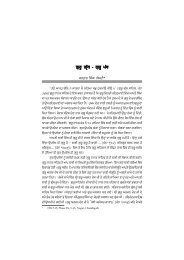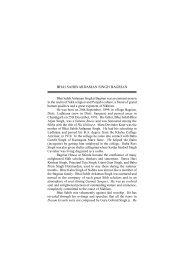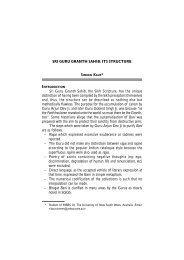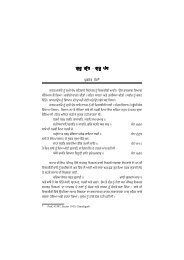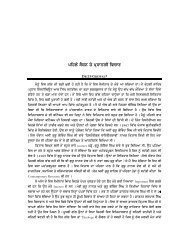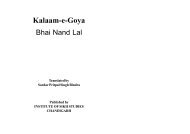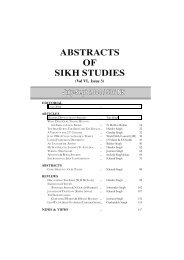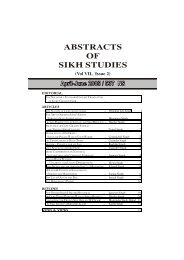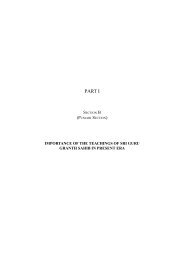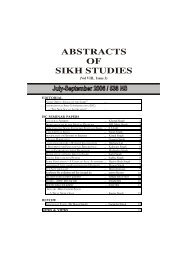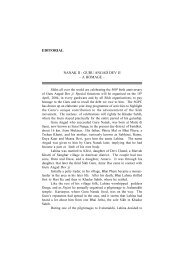Create successful ePaper yourself
Turn your PDF publications into a flip-book with our unique Google optimized e-Paper software.
FROM CROWN TO THE CROSS-ROADS – SIKH HISTORY GOES FULL CIRCLE67taken in tabiah <strong>of</strong> Guru Granth ji and the Punj Piaras. Such a decisiontaken after full consultation and absolute freedom <strong>of</strong> speech by all,was then accepted in toto by all. In essence, once a decision wasarrived at, no one questioned it or disobeyed it.3. The Entire Body <strong>of</strong> the Khalsa behaved as One – no doubtthere were Sardars and Foot Soldiers, but when it came down to basics,there was absolute freedom among all <strong>Sikh</strong>s. The Sardars sat downand ate with the common <strong>Sikh</strong>s, there was upward and downwardcommunication and mobility, each was a servant <strong>of</strong> the whole. If aSardar committed something against the Moral Code, he could be andwould be punished. Even the Maharaja was tied to a tree and lashedtwenty times in public for a moral <strong>of</strong>fence. In essence, no one wasabove the law <strong>of</strong> the Khalsa.This is a very brief account <strong>of</strong> how we arrived at the Crossroadsand then went on to claim the Crown.The <strong>Sikh</strong>s are one <strong>of</strong> the most prosperous and politicallyimportantreligious minorities in India. Today, the Diaspora <strong>Sikh</strong>s area vibrant part <strong>of</strong> many Foreign countries such as Canada, UK, USA,Australia, New Zealand, apart from the long-established migrantcolonies in Malaysia, Singapore Indonesia and Thailand. The religionitself is <strong>of</strong> comparatively recent origin – it dates from the time <strong>of</strong>Babur – but the history <strong>of</strong> its community, called Panth , or “Path,” bythe faithful, is a deeply rooted aspect <strong>of</strong> <strong>Sikh</strong> life. Since its inception,the <strong>Sikh</strong> community has been one <strong>of</strong> the major factors in Indian history,and in the Two World Wars proved its valour and valuable contributionas well on a Global scale.The Mughals correctly “understood” that <strong>Sikh</strong>ism was a separatistmovement, a “Danger” to their Hegemony and Empire, and tried theirbest to kill it in its infancy by martyring Guru Arjun Ji and waging waragainst Guru Hargobind Ji, Guru Gobind Singh ji, but they failed andby the eighteenth century, the <strong>Sikh</strong>s had established a separate kingdomwith its capital in Lahore. The British arrived in India as the BritishEast India Company and gradually changed from traders to conquerors.They also realized the “ biggest obstacle to their Empire” lay in theform <strong>of</strong> the <strong>Sikh</strong> kingdom <strong>of</strong> Lahore. By 1850, they had annexed thewhole <strong>of</strong> India barring only the Punjab Khalsa Kingdom <strong>of</strong> MaharajaRanjit Singh. As long as the Maharaja was alive, the British kept their



